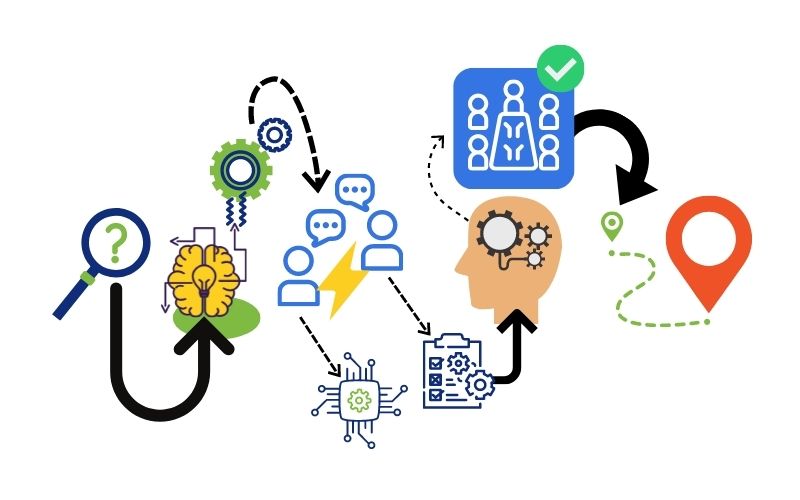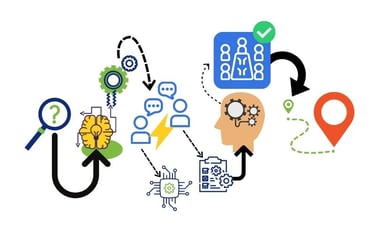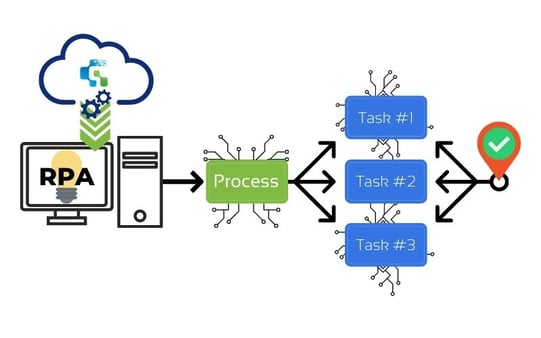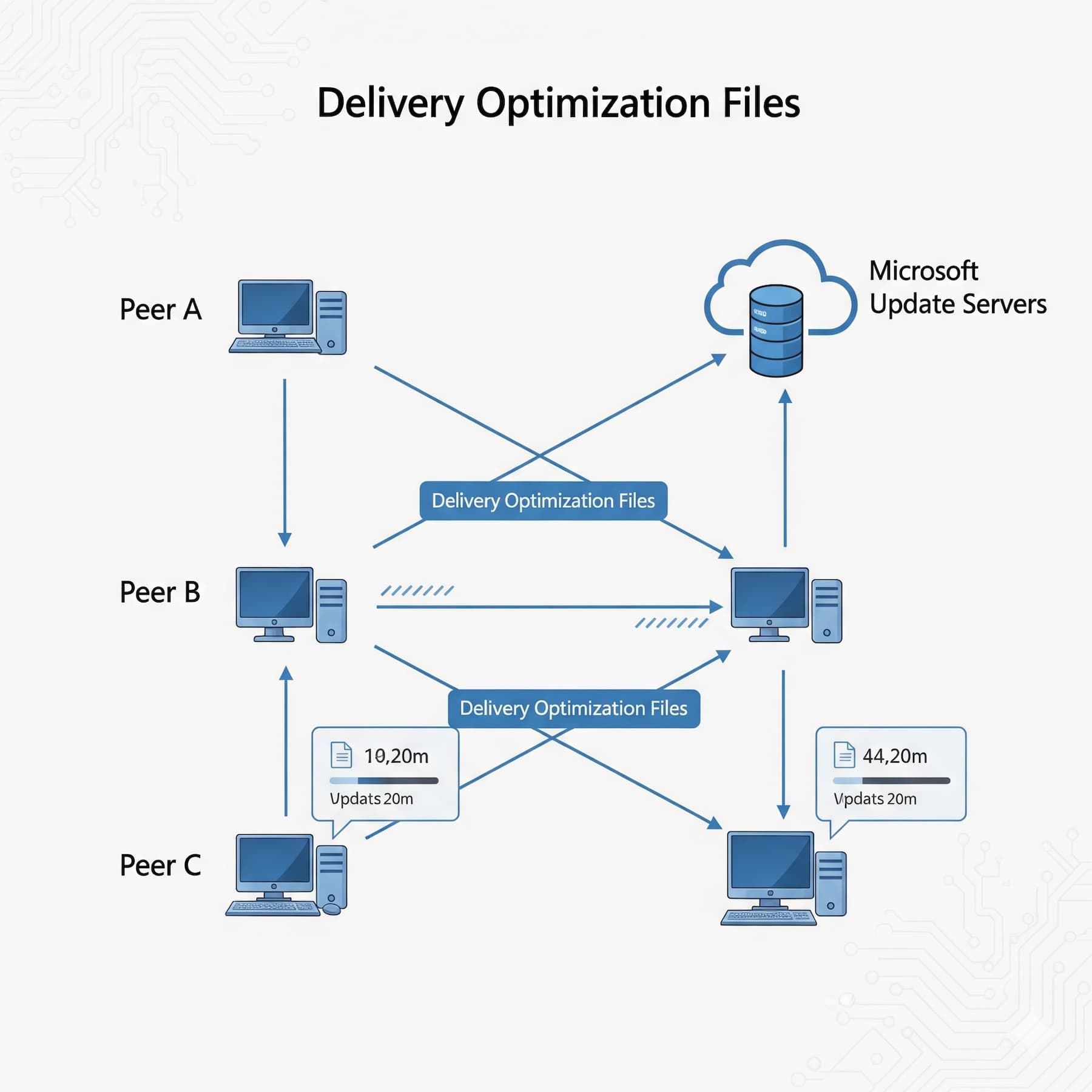What Are Delivery Optimization Files? Delete or Keep? (Full IT Guide)
Have you heard about delivery optimization files? In the age of technology, most of us use computers on a daily basis for work, banking, paying...

Technology is evolving faster, daily. This can make it difficult to keep up with all the changes, but it can also help us do our work faster.
Automation has become a key method for all businesses to unlock productivity going into the next decade.
Studies from McKinsey & Company suggest that the use of automation is growing, and that more companies are pursuing automation now than two years ago.
Further, In 2021, 66% of companies said they are at least piloting the automation of business processes in one or more business functions.
Automation can come in different forms; however, here we are going to cover the basics of Robotic Process Automation, and the use of RPA bots.
Robotic process automation (RPA) is the use of software for business process automation.
This can include tasks such as data entry, customer service, and financial operations.
RPA can help your business improve efficiency and productivity. However, it is important to note that RPA should not be used to replace human workers.
Rather, it should be used to automate menial and repetitive tasks so that human employees can focus on more important work.

RPA works by using a graphical user interface (GUI) to capture the steps of a task that needs to be automated. Like this:
Once the steps have been captured, the RPA software can then execute those steps automatically.
The software is called a "bot" - programs that can copy a human employee's actions. These bots can be used to perform any sort of actions and tasks, from data entry to invoicing, recognizing and reading text, and more.
RPA stands for:
RPA and AI are often confused as the same thing, but RPA is not artificial intelligence (AI) or machine learning. AI and machine learning involve the use of algorithms to enable machines to learn and make decisions on their own.
RPA, on the other hand, relies on predefined algorithms that are used to automate tasks.
As a result, RPA is often seen as a more simplistic form of automation.
Another thing to note is that robotic process automation cannot be used to replace human workers entirely.
There will always be tasks that require human interaction and decision-making, which is why RPA should be seen as a tool that can help to improve efficiency and productivity within an organization.
We'll go into more detail on the human worker element later on.

RPA is used to automate repeatable tasks that are done by people.
These tasks can be manual or digital and include things like data entry, copying and pasting data, checking email, and filling out forms.
"Shortcuts" is an app found on every iPhone since 2019, when iOS 13 was introduced. It lets you automate your life by talking to the apps on your iPhone and giving them commands in a specific order.
In business, RPA can also be used to automate processes that involve communicating with other applications or systems.
There are some things that robotic process automation cannot do: It cannot make decisions on its own, and it cannot interact with humans in a conversation. RPA is also not able to do things that require human judgment.
Robotic process automation (RPA) is sweeping the business world as the next big thing in streamlining and automating business processes.
RPA is not a new technology, but its capabilities are expanding rapidly, making it an attractive for businesses.
It was first developed as a way to help businesses automate their customer service processes.
But in recent years its capabilities have expanded rapidly, making it an attractive option for businesses of all sizes.
RPA has been used in call centers, insurance companies, banks, and healthcare organizations. Basically, any place where there are repetitive tasks that need to be done can benefit from using RPA software.
Like any new technology, there are some risks associated with using RPA.
One of the main risks is that if not implemented correctly, RPA can lead to decreased employee productivity and even job losses.
Another major risk is that the wrong processes could be automated.
In order to avoid this, it is important to ensure that RPA is properly integrated into an organization's existing systems and processes. It's important to use a collaborative effort with your teams to understand the real cost and benefit of automating.
Another risk is that as businesses become more reliant on automation, they may begin to lose their competitive edge.
It is therefore important to carefully evaluate the benefits and drawbacks of using RPA before making a decision about whether or not to implement it.
The technology behind robotic process automation is fairly straightforward.
RPA software uses algorithms, called "bots" to interpret and execute certain tasks that have been programmed into it.
These tasks can be as simple as copying and pasting data from one location to another, or more complex processes such as retrieving specific information from a database.
RPA is also relatively cheap and easy to set up, which makes it a cost-effective option for businesses of all sizes.
In most cases, the answer is no. RPA bots can automate certain tasks that are currently done by human workers, but they cannot completely replace them.
There are some tasks that are best done by humans, such as tasks that require creativity, critical thinking, or emotional intelligence.
Additionally, RPA can only automate processes that are currently manual and rule-based. It cannot create new processes or make decisions on its own.
One thing to keep in mind is that with the use of RPA, organizations can actually free up human workers to focus on more important tasks.
In other words - RPA can also give your business the ability to get MORE value from employees and potentially free up resources to bring in more people.
There is no doubt that robotic process automation is a powerful tool that can have a significant impact on businesses. However, it should not be viewed as a replacement for human workers.
Rather, it should be seen as a way to automate certain tasks that can be done more efficiently and effectively by machines.
When used in the right way, RPA can help businesses become more efficient and productive.
If you're looking for a way to streamline your business processes and increase efficiency, don't overlook the power of RPA.
RPA is a way of automating manual processes using software that has been specifically designed for that purpose.
This makes it an attractive option for businesses looking to improve efficiency and reduce costs without sacrificing quality or reliability.
One of the key benefits of RPA is its scalability. Unlike human workers, who can only do so much in a given day, RPA software can be programmed to handle an unlimited number of tasks.
RPA is not only for large companies - there are RPA services for small and medium-size busineses too!
RPA can also help to speed up the processing of transactions, which can lead to reductions in turnaround times and improved efficiency.
In addition, RPA can help free up employees' time so that they can focus on more strategic tasks. This can lead to increased productivity and profitability for businesses.
Ultimately, RPA can help all businesses improve their efficiency and bottom line.
Robotic process automation (RPA) is a type of software that automates certain tasks or processes within a company.
It can be used to automate simple, repetitive tasks such as data entry or it can be used to automate more complex tasks such as customer service.
RPA is not artificial intelligence and it is not a replacement for human workers. Rather, it is a tool that can help companies run more efficiently by automating certain tasks.
RPA can save companies time and money, and it can help them improve their productivity.
However, it is important to note that RPA should not be used to replace human workers; rather, it should be used to complement them.

Have you heard about delivery optimization files? In the age of technology, most of us use computers on a daily basis for work, banking, paying...

Healthcare organizations face a unique challenge that keeps me awake at night: they're simultaneously the most targeted industry for cyberattacks and...